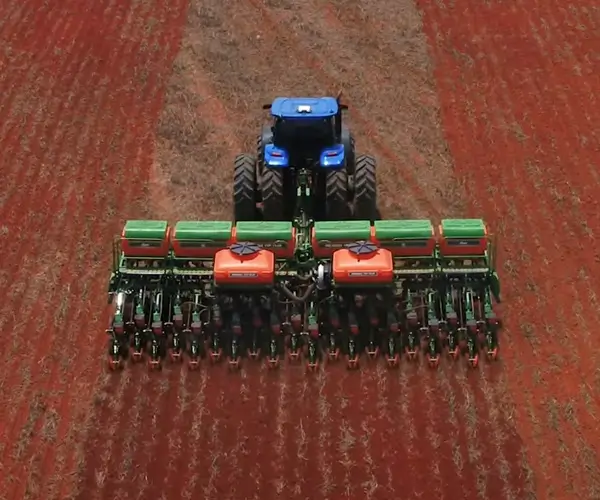Certainly! Here is the first part of the soft article on "Servo Motor vs DC Motor vs Stepper Motor." I'll follow the format you've requested.

Unlocking the Basics: An Introduction to Electric Motors
Electric motors are the heartbeats of modern machines, powering everything from tiny drones to massive industrial equipment. They are essential in converting electrical energy into mechanical motion, but not all motors serve the same purpose or operate under the same principles. Among the most popular types are servo motors, DC motors, and stepper motors—each with distinct characteristics tailored for different applications.
What Is a Servo Motor?
A servo motor is a high-precision motor equipped with an internal feedback mechanism, usually a rotary encoder or potentiometer. This allows the motor to not only rotate but to do so with exact position, speed, and torque control. Because of this feature, servo motors are widely used where precise movement is critical, such as in robotics, CNC machinery, and camera auto-focus systems.
Core to its design is a closed-loop control system: the motor receives commands, moves accordingly, and constantly reports back its position and speed. This allows for real-time adjustments, enabling highly accurate motion control. Typically, servo motors are AC or DC power-driven but integrated with controllers that manage their feedback systems.
What Is a DC Motor?
The DC motor is one of the simplest and most common electric motors, powered directly by a DC supply. It operates based on the interaction between magnetic fields generated by current-carrying conductors and permanent magnets or electromagnetic fields within the motor.
DC motors are prized for their simple design, ease of control, and affordability. They can be controlled by varying the supply voltage or using a PWM (Pulse Width Modulation) signal to adjust speed. However, standard DC motors lack intrinsic position feedback, which means precise control requires additional components or sensors.
Mainly used in applications like electric vehicles, toys, and household appliances, DC motors excel in tasks where variable speed and torque are needed but precision is not its primary focus.
What Is a Stepper Motor?
A stepper motor is a type of brushless motor that moves in discrete, fixed angles called steps. Instead of continuously rotating like a DC or servo motor, stepper motors move in controlled increments, making them inherently suitable for precise positioning.
By energizing coils in sequence, the motor’s rotor advances step by step, allowing exact control over position and speed without needing feedback devices. These properties have made stepper motors popular in 3D printers, CNC machines, and camera gimbals.
Unlike servo motors, which often require complex feedback systems, stepper motors are open-loop systems—meaning they rely on the assumption that the motor moves as commanded—but can also be enhanced with feedback for greater accuracy.
Core Differences in Operation and Control
At the core, understanding these motors hinges on their control systems and feedback mechanisms.
Servo motors operate in a closed-loop system, constantly monitoring and adjusting their position and speed, which allows them to execute complex, high-accuracy movements.
DC motors are simpler, with open-loop control. Speed regulation is straightforward, but precise positioning requires additional sensors, making them less suitable for small-scale positioning tasks.
Stepper motors naturally move in fixed steps without feedback, making them simple and reliable for positioning, although they're susceptible to missed steps if overloaded.
Power and Torque Characteristics
Each motor type offers different performance profiles:
Servo motors provide high torque at high speeds and are capable of dynamic, precise control. Their torque is often maintained across a wide range of speeds due to feedback control.
DC motors can deliver high starting torque and maintain it over a large speed range but can be less efficient at maintaining position without special control circuits.
Stepper motors generate holding torque when stationary and can produce high torque at low speeds. However, their torque drops at higher speeds, and they can stall if overloaded or improperly driven.
Applications at a Glance
Choosing the right motor requires matching its strengths to your project needs:
Servo motors are perfect when precision, dynamic response, and smooth control are needed—think robotic arms, drone gimbals, or CNC machining.
DC motors work well in applications where variable speed, simplicity, and affordability are more important than precision—like electric scooters, small appliances, or conveyor belts.
Stepper motors excel in scenarios where simple, reliable position control is essential, especially when feedback systems are unnecessary or too costly—such as 3D printing, camera control, or precision instrument positioning.
Stay tuned for Part 2, where we'll delve deeper into performance comparisons, pros and cons, and practical decision-making tips to help you pick the right motor for your specific engineering or hobby project.
Kpower has delivered professional drive system solutions to over 500 enterprise clients globally with products covering various fields such as Smart Home Systems, Automatic Electronics, Robotics, Precision Agriculture, Drones, and Industrial Automation.




































